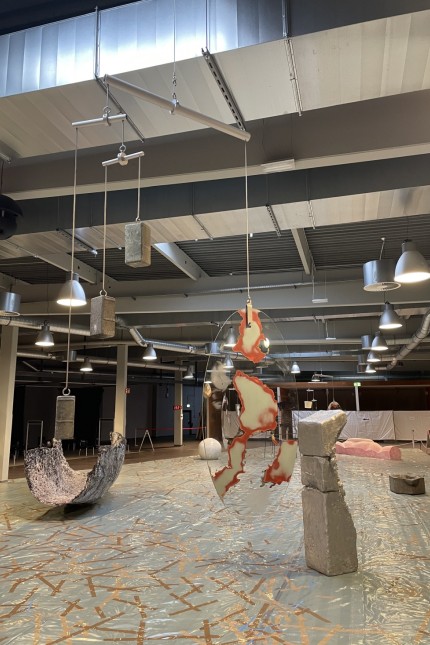Interview in the morning about art in the vaccination center: "My work is always out of place"
The sculptor Gereon Krebber, born 1973, is known for his often somewhat disturbing sculptural interventions. He lives and works in Cologne and has a professorship at the Düsseldorf Art Academy. He grew up in Bottrop. At the Corona Vaccination Center there, he is currently showing a spontaneously compiled retrospective of work from the past 20 years under the title “Covid / B1-Remix”. Those who are vaccinated automatically benefit from this exhibition. Otherwise nobody is allowed in.
SZ: How did it come about that you have a vaccination center art have equipped?
Gereon Krebber: Actually, I was supposed to be showing new work in the recently opened extension of the Bottrop cultural center. But that had to be postponed three times due to Corona. Then it turned out that the former indoor golf center should be converted into a vaccination center. The owner is a friend of my parents. He called me and said: “You have so many things standing around there anyway, don’t you want to show something in the vaccination center?”
Is that the right environment for your works?
I always say: conditions are opportunities. Besides, I prefer to go into the gaps with my art anyway. There is a putting green in the middle, 350 square meters, lavishly modeled with artificial turf. That had to be covered and no one was allowed to put it on so that no one breaks their ankle because there are golf holes under the tarpaulin. But you can put something on it. I have selected works from the past 20 years. A disparate, heterogeneous mixture. A lying pink doll, mobiles made of mirror glass, a matt white glazed sphere. You can’t touch anything, so you don’t know whether an object is heavy or light?
(Photo: Gereon Krebber)
Some artists are special when it comes to creating the right space for their work.
My work is always invasive, misplaced and precarious, that’s how I work. The vaccination center, for example, would be completely unusable for artists who want to hang something on the walls. But that suited me better. I liked the tarpaulin as a base, so I made a floor collage out of it with adhesive tape. And of course I had to make sure that all work was flame retardant, it had to have fire protection class B1. That is why the exhibition is also called “Covid / B1-Remix”. But otherwise it would have been far too academic for me to do my own, site-specific installation – in the sense of: “This is about the virus!” No, it’s about something else.
What is it about?
I am primarily concerned with the physicality of the sculptures. In what he sees, the viewer can perhaps recognize something that is happening to him. There is an analogy. Because during the vaccination process you are strongly advised of your own body and its vulnerability. It is not a visual anesthetic like hospital art often is. But of course there is an aesthetic difference between the occasion, the vaccination, and the work you see there. I see it as an opportunity to show autonomous, physical sculpture in a wide range.
(Photo: Manfred Förster)
How many opportunities do people now have to experience your art?
In any case, it’s not like a museum, where the public goes specifically to see art. On the contrary, you are in a completely art-free framework. This vaccination route is organized almost militarily. There is security that checks whether you are allowed in at all. When you walk in, they have a fever, then they sit down at a table like a schoolchild and tell about the risks, then put them in a box, and then get vaccinated. Then there is half an hour waiting time, during which you are under observation, in case you react in any way directly to the vaccination. You cannot move freely, you can only look at these immobile objects from your chair.
Is the forced lingering an advantage or a disadvantage for the reception of art?
I think it’s great because experience has shown that visitors spend a maximum of two minutes per work of art, even with video installations.
(Photo: Gereon Krebber)
Where do you get vaccinated yourself?
You can choose where you want to be vaccinated. When it’s my turn, I’ll definitely go to Bottrop. You can’t just walk in there, and I would like to see it all in operation.


